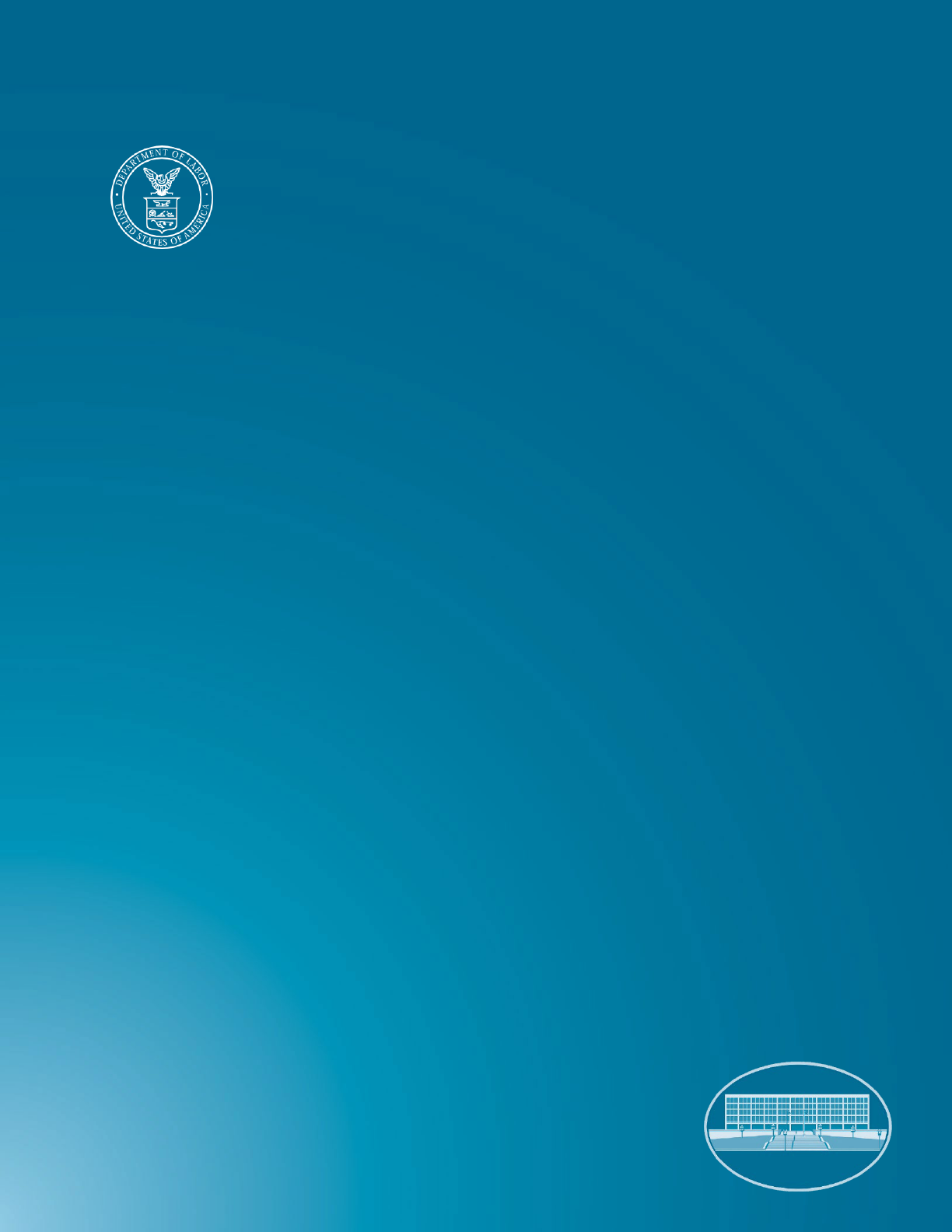
July 2023
UNITED STATES DEPARTMENT OF LABOR
COVID-19
WORKPLACE
SAFETY PLAN
3
Contents
Summary of Recent Changes ................................................................................................................................. 4
Introduction ........................................................................................................................................................... 5
Purpose and Scope ................................................................................................................................................ 5
COVID-19 Coordination Team ............................................................................................................................... 6
Labor Relations ...................................................................................................................................................... 7
Overview of COVID-19 Protocols ........................................................................................................................... 8
Information About Vaccination ........................................................................................................................... 10
DOL Employees and Vaccination ..................................................................................................................... 11
Protocols for Contractor Employees ............................................................................................................... 11
Protocols for Visitors ....................................................................................................................................... 12
Reasonable Accommodation ............................................................................................................................... 12
Health and Safety ................................................................................................................................................ 13
Symptom Screening ......................................................................................................................................... 13
COVID-19 HOSPITAL Admission Levels ............................................................................................................ 14
Mask-wearing .................................................................................................................................................. 14
Increase space and distance ............................................................................................................................ 17
Testing ............................................................................................................................................................. 17
Ventilation and Air Filtration ........................................................................................................................... 19
In Case of COVID-19 Illness or Known Exposure ............................................................................................. 19
Official Travel ....................................................................................................................................................... 21
Conferences, Meetings, and Events .................................................................................................................... 24
Occupancy Limits ................................................................................................................................................. 24
Information Management ................................................................................................................................... 24
Contact ................................................................................................................................................................ 25

4
SUMMARY OF RECENT CHANGES
Updates as of July 10, 2023
• Updates to align with the Executive Order 14099 on Moving Beyond COVID-19 Vaccination
Requirements for Federal Workers.
• Changes to comply with end of the public health emergency and updated Centers for Disease
Control and Prevention COVID-19 data collection.
Updates as of December 27, 2022
• Update to health and safety protocols, which no longer depend on vaccination status, including
sections on travel, testing, quarantine, and isolation.
• Additional updates to align with Safer Federal Workforce Task Force guidance.

5
INTRODUCTION
The Administration’s paramount concern in crafting COVID-19 workplace safety plans has consistently
been the health and safety of all Federal employees, onsite contractor employees, and individuals
interacting with the Federal workforce. The Federal Government is committed to updating these plans
consistent with best public health practices and guidance from the U.S. Centers for Disease Control and
Prevention (CDC), the Office of Management and Budget (OMB), the General Services Administration
(GSA), the Office of Personnel Management (OPM), and other Federal agencies, including guidance and
FAQs from the Safer Federal Workforce Task Force (Task Force). Key governing authorities for this plan
include the following:
• Executive Order 13991: Protecting the Federal Workforce and Requiring Mask-Wearing
(January 20, 2021)
• Executive Order 14099: Moving Beyond COVID-19 Vaccination Requirements for Federal
Workers (May 9, 2023)
o Revoked Executive Order 14042: Ensuring Adequate COVID Safety Protocols for
Federal Contractors (September 9, 2021) and Executive Order 14043: Requiring
Coronavirus Disease 2019 Vaccination for Federal Employees (September 9, 2021).
o In implementing Executive Order 14099, DOL is rescinding policies implemented to l
comply with Executive Orders 14042 and 14043.
• Office of Management and Budget (OMB) Memorandum M-21-15, titled “COVID-19 Safer
Federal Workplace: Agency Model Safety Principles” (January 24, 2021), and the Task Force
Model Agency COVID-19 Safety Principles (updated September 15, 2022)
• OMB Memorandum M-21-25, titled “Integrating Planning for a Safe Increased Return of Federal
Employees and Contractors to Physical Workplaces with Post-Reentry Personnel Policies and
Work Environment” (June 10, 2021)
PURPOSE AND SCOPE
The purpose of this document is to provide minimum mandatory COVID-19 safety guidance for the U.S.
Department of Labor (DOL) and the DOL agencies. The health and safety of all DOL employees, onsite
contractor employees, and individuals interacting with the DOL workforce is the Department’s highest
priority.
DOL recognizes that COVID-19 can be very contagious. This document is primarily focused on
application of relevant guidelines, policies, processes, and protocols at all DOL facilities to mitigate the
spread of COVID-19 in the workplace and to protect ourselves, and our communities, from severe
illness from COVID-19. These guidelines apply to buildings wholly managed by DOL as well as those
buildings (or areas within buildings) controlled by DOL, in combination referred to as “DOL facilities.”

6
These guidelines also apply to lands under DOL control.
DOL will consider equity when implementing this Plan to not only ensure consistent application of
policies, but also balance the health and safety of employees and the necessary services the
Department provides to the American people, particularly vulnerable populations.
This document is not meant to be comprehensive. This guidance supersedes any conflicting
information in previously published internal DOL guidance on COVID-19. Additional and supplemental
implementation guidance will be provided as necessary.
As needed, DOL will consult with the Task Force to discuss special circumstances or higher-risk work
environments, in order to provide DOL agencies with specific guidance for those environments and
circumstances.
COVID-19 COORDINATION TEAM
The Office of the Assistant Secretary for Administration and Management (OASAM) will continue to
serve as lead for the Department’s COVID-19 planning, response, and management as it relates to the
protection of the DOL workforce and those with whom the DOL workforce comes into contact.
DOL has established a core COVID-19 Coordination Team (Team) to serve in an advisory role to the
Secretary of Labor and Assistant Secretary for Administration and Management (ASAM) in resolving
matters that are crucial to the development and implementation of these guidelines and other
supplemental guidance. The Team is chaired by the ASAM and consists of seven standing members,
listed below. The Secretary or ASAM may also direct others from any part of DOL, including its
component agencies, to participate as members of the Team, or to provide information and assistance.
• The Secretary, or designee
• The Assistant Secretary for Administration and Management (ASAM), or designee
• The Occupational Safety and Health Administration (OSHA) Deputy Assistant Secretary, or
designee
• The OSHA Deputy Director of Standards and Guidance, or designee
• The Chief Human Capital Officer, or designee
• The Director of the OASAM Business Operations Center, or designee
• The Solicitor of Labor, or designee
Any Team member may designate members of their staff to represent or assist them in performing the
work of the Team.
The Team is responsible for advising the Secretary on matters including, but not limited to:
• Assessments to establish, implement, and monitor compliance with relevant government-wide
health and safety policies;

7
• Revisions to the COVID-19 workplace safety plans and protocols;
• Outreach strategy for communicating with the DOL workforce and DOL unions that is regular
and transparent and complies with DOL’s obligations under Federal labor management
relations law and existing agreements;
• Compliance issues and procedures for remediating them; and
• Exceptions to policies and procedures for reviewing requests.
Where appropriate, the Team may consult with GSA, OPM, OMB, the Task Force, and other
appropriate authorities. The Team will also consult the agency’s Senior Agency Official for Privacy, as
needed. For privately owned and Federally-leased spaces, the Team will coordinate through the
OASAM Business Operations Center, OASAM Regional Administrators, and Regional Executive
Committees, along with GSA and the Facility Security Committees. The Team will also participate in the
sharing of best and promising practices across government.
The Team shall meet as needed and may form subgroups, or workgroups, with representatives from
DOL agencies to support and inform the work of the Team.
• The Team shall select a chairperson to lead each workgroup.
• Members of the Team may serve on workgroups to assist in researching and addressing specific
Departmental initiatives or time-sensitive issues.
• The Team shall provide guidelines governing the operation of workgroups, including
participation, scope, mandate, and time frames for decision-making.
• The Team shall review and monitor the work of the workgroups and the Team has final
approval authority over all workgroup guidance, documents, and other work products.
• The Secretary of Labor or ASAM may direct the Team to create additional workgroups as
needed.
LABOR RELATIONS
DOL engaged with its Unions to obtain input for the DOL COVID-19 Workplace Safety Plan. In addition,
DOL will satisfy applicable collective bargaining obligations under 5 U.S.C. Chapter 71 and its operative
collective bargaining agreements and memoranda of understanding as they relate to the DOL COVID-
19 Workplace Safety Plan. DOL communicates regularly with Union leadership and representatives on
COVID-19 workplace safety matters, and at some points have had regularly scheduled meetings to
discuss updates and are now having those meetings on an ad hoc basis as needed.

8
OVERVIEW OF COVID-19 PROTOCOLS
Category COVID-19 Protocol
Mask-Wearing High-quality masks or respirators are required for all individuals in DOL facilities
when the CDC reports that the COVID-19 Hospital Admission Level is High in a
county where the DOL facility is located, or where required by State, Tribal,
territorial, or local laws, rules, regulations, or existing collective bargaining
agreements0F
1
. See the CDC COVID-19 County Check for mask-wearing
requirements by County location. Signage is posted in each DOL location making
clear what mask-wearing requirement applies. See the Mask-Wearing section
below for additional information.
Increase Space
and Distance
Increasing space and distance is recommended for all individuals when the CDC
reports that the COVID-19 Hospital Admission Level is Medium or High. Signs will
be posted to encourage increasing space and distance and avoiding crowding.
Official Travel
Note: The Travel
section does not
apply to visitors.
There are no government-wide limits on official travel (i.e., travel conducted under
an official travel authorization). Individuals who are traveling on DOL official
business should adhere strictly to CDC guidance on travel. See the Official Travel
section below for additional information.
1
Wherever high-quality masks or respirators are required in this document, an individual may choose to use a filtering
facepiece respirator (e.g., N95). And any use of a filtering facepiece respirator is considered voluntary. Affected employees
who choose to wear a filtering facepiece respirator while at work need to review the information in Appendix D to OSHA’s
Respiratory Protection Standard, 29 C.F.R. 1910.134, available here.

9
Symptom
Screening
If an employee, contractor employee, or visitor has fever or chills, or if they have
other new or unexplained symptoms consistent with COVID-19 such as new or
unexplained onset of cough, shortness of breath, or difficulty breathing, new or
unexplained loss of taste or smell, or new or unexplained muscle aches, they
should not enter a DOL workplace. If an individual suspects that they have COVID-
19, such as because they have new or unexplained COVID-19 symptoms, but they
do not yet have test results, they should not enter a DOL workplace and should get
tested if they have not already done so. Employees and contractor employees
working onsite at DOL workplaces, and all visitors to DOL facilities must complete
symptom screening before entering a DOL facility. Employees also must complete
symptom screening prior to interacting with members of the public in person as
part of their official responsibilities. Any individual who develops fever, chills, or
other new or unexplained symptoms consistent with COVID-19, or who tests
positive for COVID-19, while onsite during the workday must immediately wear a
high-quality mask or respirator (such as an N95) and promptly leave the
workplace.
Post-exposure
precautions
following a
known exposure
to COVID-19
Individuals who are known to have been exposed to someone with COVID-19 but
do not have symptoms, must follow CDC guidance on testing if working onsite at a
DOL facility or interacting with members of the public as part of their official DOL
responsibilities. For 10 days after exposure, the individual must: monitor for
COVID-19 symptoms; wear a high-quality mask or respirator while indoors at an
agency workplace or interacting indoors with members of the public in person as
part of their official responsibilities; and take extra precautions, such as increasing
space and distance from others and avoiding crowds, when they know they are
around people who are more likely to get very sick from COVID-19 while onsite at
an agency workplace or interacting with members of the public in person as part
of their official responsibilities.
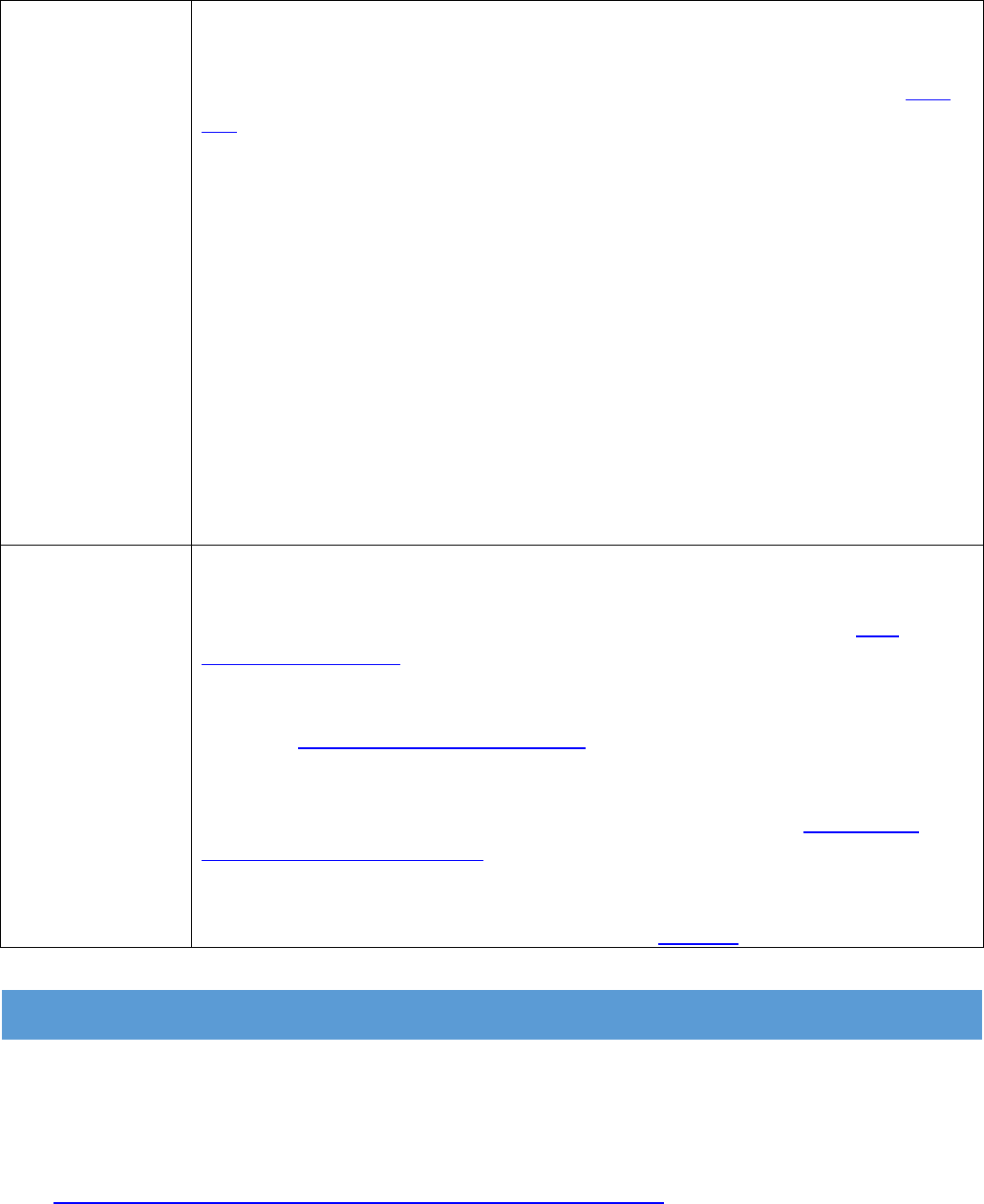
10
Isolation for
probable or
confirmed COVID-
19
Any individual with probable or confirmed COVID-19 must not enter a DOL facility
or interact with members of the public in person as part of their official DOL
responsibilities. This includes people who have an initial positive diagnostic viral
test for COVID-19, regardless of whether or not they have symptoms, and people
with symptoms of COVID-19, including people who are awaiting test results or
have not been tested.
Individuals who tested positive for COVID-19 and never developed symptoms can
return to working onsite at an DOL workplace or interacting with members of the
public as part of their official DOL responsibilities after 5 full days following their
positive COVID-19 test (day 0 being the day the individual was tested).
Individuals who tested positive for COVID-19 and had symptoms can return to
working onsite at an DOL workplace or interacting with members of the public as
part of their official DOL responsibilities after 5 full days from the onset of
symptoms (day 0 being the day of symptom onset), once they are fever-free for 24
hours without the use of fever-reducing medication and their other symptoms are
improving. See In Case of Illness section below for additional information.
Post-Isolation
Precautions
Once an individual has returned to working onsite at a DOL workplace or
interacting with members of the public as part of their official DOL responsibilities
after having tested positive for COVID-19 and isolated consistent with CDC
guidance on isolation, the individual must continue to take precautions consistent
with CDC guidance for at least 10 full days after their first day of symptoms, or
after the date of a positive viral test for asymptomatic individuals, including
wearing a high-quality mask or respirator (such as an N95) when around others,
avoiding eating and drinking around others, avoiding environments such as dining
facilities, gyms, or other places where they may need to be unmasked around
others, and avoiding being around people who they know are at high risk for
severe disease from COVID-19. If at any point their COVID-19 symptoms recur or
worsen, the individual must again not enter a DOL facility or interact with
members of the public as part of their official DOL responsibilities, restarting at
day 0, consistent with CDC recommendations on isolation.
INFORMATION ABOUT VACCINATION
COVID-19 vaccines available in the United States are effective at protecting people from getting
seriously ill, being hospitalized, and dying. As with other vaccine-preventable diseases, you are
protected best from COVID-19 when you stay up to date with the recommended vaccinations,
including recommended boosters. For more information on staying up to date with COVID-19 vaccines,
see: Stay Up to Date with COVID-19 Vaccines Including Boosters | CDC.
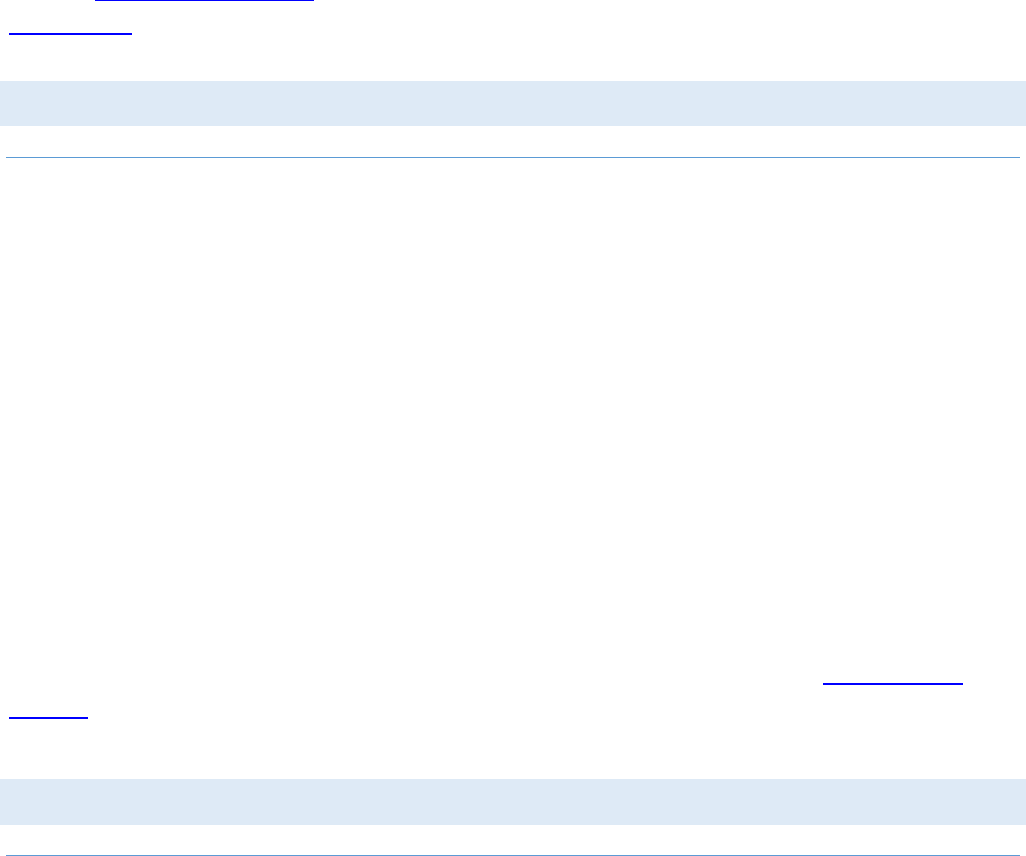
11
Visit the Department’s Intranet (LaborNet) for more information on obtaining a vaccine, or search
vaccines.gov, text your ZIP code to 438829, or call 1-800-232-0233 to find locations near you.
DOL EMPLOYEES AND VACCINATION
LEAVE FOR FEDERAL EMPLOYEES RELATED TO COVID-19 VACCINATION
Effective January 21, 2022, employees may use up to four hours of administrative leave to obtain any
FDA-authorized COVID-19 vaccine dose during work hours. An employee may use up to four hours of
administrative leave per dose of the COVID-19 vaccine, including travel to and from vaccination
appointment. If an employee spends less time getting the vaccine, only the needed amount of
administrative leave will be allowed. Time needed in excess of four hours may be granted, at the
employee's request, as annual leave, sick leave, or other forms of paid or non-paid leave. In addition,
the Department grants up to 2 workdays of administrative leave if an employee has an adverse
reaction to any COVID-19 vaccine dose that prevents the employee from working (i.e., no more than 2
workdays for reactions associated with a single dose).
Employees may also be granted administrative leave to take a family member to receive any dose of
COVID-19 vaccine. For this purpose, a “family member” is an individual who meets the definition of
that term in OPM leave regulations (see 5 CFR 630.201).
Employees may not be credited with administrative leave for time spent getting any COVID-19 vaccine
dose outside their tour of duty. Full guidance on these policies can be found on the Department’s
intranet (LaborNet).
PROTOCOLS FOR CONTRACTOR EMPLOYEES
HEALTH AND SAFETY PROTOCOLS FOR ONSITE CONTRACTOR EMPLOYEES
Contractor employees must comply with applicable COVID-19 workplace safety protocols when they
are onsite in DOL-controlled worksites. See the Mask-Wearing, Symptom Screening, In Case of
Exposure, In Case of Illness, Increase Space and Distance, and Official Travel sections below for safety
protocols and requirements that apply to contractor employees.
A contractor may be required to provide an accommodation to their contractor employees who
communicate to their employer that they are not able to comply with a required safety protocol
because of a disability or medical condition or because of a sincerely held religious belief, practice, or
observance. A contractor should review and consider what, if any, accommodation it must offer. The
contractor is responsible for considering and taking appropriate action in response to such requests for
accommodations regardless of the contractor employee’s place of performance.
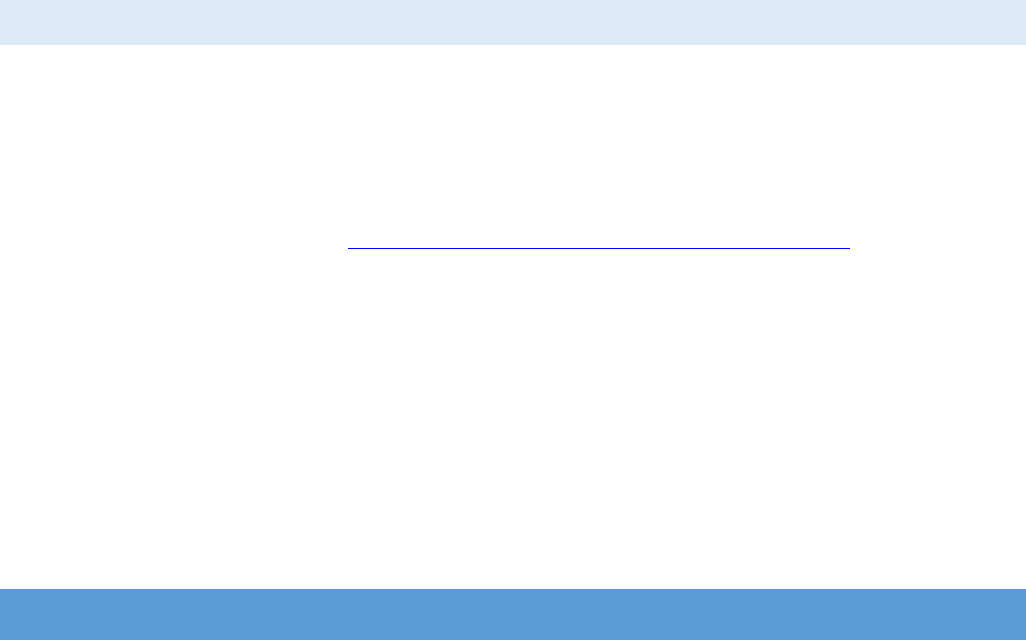
12
In order for DOL to assess appropriate safety measures for contractor employees in a DOL facility,
contractors should notify their DOL contracting officers no later than three days prior to a contractor
employee’s scheduled arrival at a DOL facility when one of their employees who works onsite at a DOL
facility has received an exception to any otherwise applicable COVID-19 safety protocol.
PROTOCOLS FOR VISITORS
All visitors to a DOL facility, including members of the public seeking public benefit or services from
DOL, must adhere to all applicable DOL workplace safety protocols, including those based on the
current COVID-19 Hospital Admission Level for the county in which the facility is located, as
communicated in this DOL COVID-19 Workplace Safety Plan, through information on DOL’s public
website, and through signage in DOL facilities.
The DOL public-facing website has instructions for visiting the Frances Perkins Building, which indicate
that visitors should conduct self-screening for COVID-19 symptoms prior to coming to the building.
Self-screening does not need to be verified by agency personnel. Other DOL facilities should provide
similar information regarding required COVID-19 symptom screening to their visitors. Visitors may also
be asked these screening questions prior to building admittance and will be denied entry should they
not answer the questions satisfactorily.
See the Mask-Wearing, Symptom Screening, In Case of Exposure, In Case of Illness, and Increase
Space and Distance, and Official Travel sections below for safety protocols and requirements that
apply to visitors.
REASONABLE ACCOMMODATION
A “reasonable accommodation” under the Rehabilitation Act, the Americans with Disabilities Act, or
Title VII of the Civil Rights Act includes modification to a workplace policy due to a disability-related
need or due to a sincerely held religious belief, practice, or observance of a DOL employee.
Reasonable accommodations to the COVID-19 safety protocols described in this plan may be required
and provided to any employee regardless of grade level, hours of duty, work location, and other
factors. Accommodations may relate to COVID-19 itself, for example, if the employee acquires the
illness and needs modifications in order to perform the essential functions of their position.
Additionally, accommodations may relate to other medical conditions, unrelated to COVID-19, but
which impact an employee’s ability to comply with the safety protocols described in this plan.
Moreover, some DOL employees with disabilities may need a reasonable accommodation to perform
onsite activities. For example, under DOL’s policy on reasonable accommodation, employees with non-
apparent underlying disabilities that may cause their immune systems to be compromised (such as
cancer) or put them at higher risk if they acquire COVID-19 (such as underlying respiratory conditions)
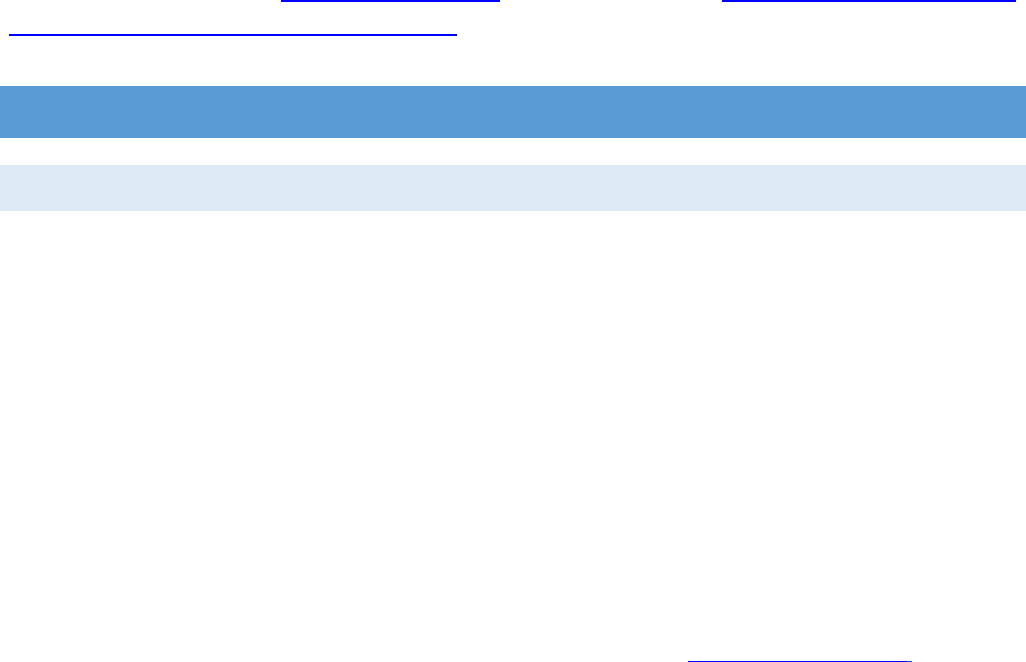
13
3
may be eligible for reasonable accommodations to onsite activities or conditions. For more
information, please see the Department’s intranet (LaborNet) section on Reasonable Accommodations
for Employees and Applicants with Disabilities.
HEALTH AND SAFETY
SYMPTOM SCREENING
All employees share in the responsibility for limiting the spread of COVID-19. One of the best ways to
limit the transmission of the virus is to stay home if you are sick. If federal employees, onsite
contractor employees, or visitors have fever or chills, or if they have other new or unexplained
symptoms consistent with COVID-19 such as new or unexplained onset of cough, shortness of breath,
or difficulty breathing, new or unexplained loss of taste or smell, or new or unexplained muscle aches,
they should not enter a DOL facility. If an individual suspects that they have COVID-19, such as because
they have new or unexplained COVID-19 symptoms, but they do not yet have test results, they should
not enter a DOL facility and should get tested if they have not already done so.
Federal employees and contractor employees working onsite will be asked to regularly complete
symptom screening (e.g., a symptom questionnaire, an exposure history questionnaire, a temperature
check), on a daily basis prior to entry to the workplace. Federal employees and contractor employees
also will be asked to complete symptom screening prior to interacting with members of the public in
person as part of their official DOL responsibilities as specified on the Department’s Intranet
(LaborNet). Visitors will also be asked to complete symptom screening before entering a DOL facility.
In order to conduct this screening, employees should take their temperature and answer a series of
questions based on current CDC guidelines on COVID-19. In addition to conducting DOL’s required
health screening at home, DOL employees and contractor employees must adhere to directions
provided by Facility Security Committees and building owners concerning screening procedures. These
questions are posted at the entrances of the FPB with a current list of symptoms (per the CDC) that
result in a prohibition on entering. They will also be posted at the entrances of DOL controlled spaces
in the field.
Below are questions that currently comprise DOL’s required screening questionnaire and that
employees, onsite contractor employees, and visitors may be asked to answer:
1. Do you currently have a fever or chills, or other new or unexplained symptoms consistent with
COVID-19 such as new or unexplained onset of cough, shortness of breath, or difficulty
breathing, new or unexplained loss of taste or smell, or new or unexplained muscle aches?
2. Have you received a positive COVID-19 test or been diagnosed with COVID-19 within the past 6
days (and have not yet completed isolation in accordance with CDC guidelines)?
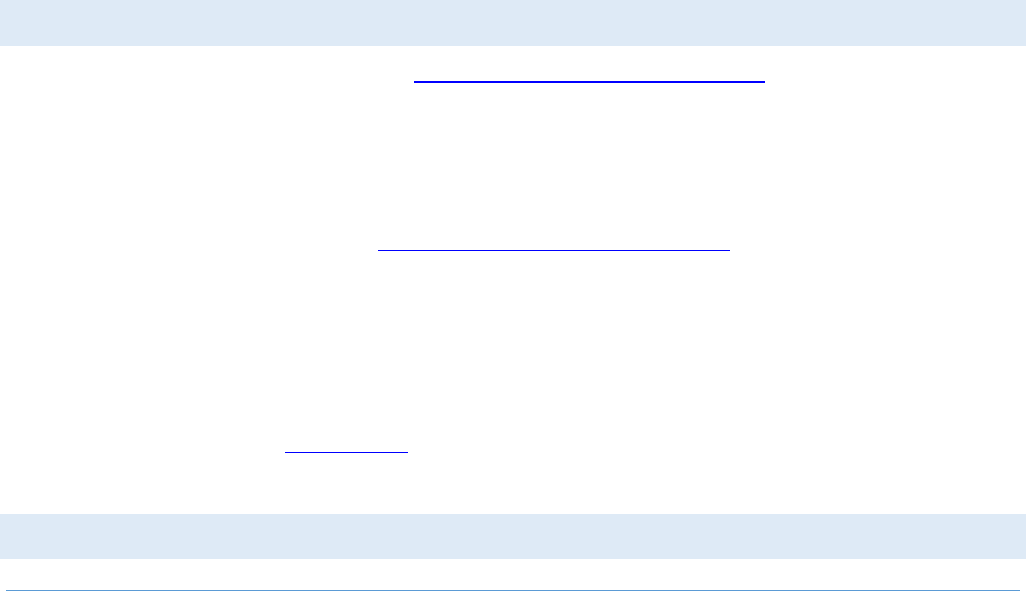
14
If a DOL employee answers “yes” to either of the screening questions, they must stay home and notify
their supervisor for further information and instructions. If an employee, contractor employee, or
visitor cannot successfully answer “no” to all of the screening questions upon arriving at any DOL
worksite, they must not enter the building. Employees and contractor employees are instructed to
contact their supervisor in a way that limits contact and potential transmission of the virus, preferably
by electronic means, or phone, to let them know that they have been denied entry and to get further
instructions. Visitors are instructed to contact the DOL office that scheduled their appointment in a
way that limits contact and potential transmission of the virus, preferably by electronic means or
phone, to let them know that entry has been denied and to ask for further instructions.
Any individual who develops symptoms consistent with COVID-19 while at their worksite must
immediately isolate, wear a high-quality mask or respirator (if the individual is not already doing so and
one is available), notify their supervisor, and promptly leave the workplace as soon as they can safely
do so. Supervisors should consult with their servicing HR Office regarding the appropriate use of leave,
as well as administrative remedies in the event that Departmental COVID-19 policies and practices are
not followed. Failure to follow Departmental COVID-19 policies and practices may result in disciplinary
action up to and including removal from Federal service.
COVID-19 HOSPITAL ADMISSION LEVELS
CDC has set recommendations related to COVID-19 Hospital Admission Levels, which measure the
impact of COVID-19 illness on health and healthcare systems and inform the appropriate prevention
strategies to utilize at a given time. The CDC updates the COVID-19 Hospital Admission Levels for each
county weekly to determine any changes that should be made to the COVID-19 safety protocols for the
upcoming week. To determine the COVID-19 Hospital Admission Level for a given area, supervisors
and employees should check the CDC COVID-19 Hospital Admission Levels page weekly. If an area’s
COVID-19 Hospital Admission Level changes from one week to the next, the COVID-19 workplace safety
protocols will be adjusted for the following week. If staff are engaged in field work, they can check the
COVID-19 Hospital Admission Level for that county on the CDC website. All individuals in a DOL facility
or worksite have a personal responsibility to maintain awareness of the COVID-19 Hospital Admission
Level in the county where the facility or worksite is located. Check the COVID-19 Hospital Admission
Level for that county on the CDC website.
MASK-WEARING
MASK-WEARING BASED ON COVID-19 HOSPITAL ADMISSION LEVELS
All individuals—including Federal employees, onsite contractor employees, and visitors—who are 2
years or older must wear a high-quality mask or respirator inside of Federal buildings in areas with a
High COVID-19 Hospital Admission Level or where required by State, Tribal, territorial, or local laws,

15
rules, regulations, or existing collective bargaining agreements. Staff interacting with members of the
public as part of their official responsibilities must also wear a high-quality mask or respirator in
workplaces located in a county where the COVID-19 Hospital Admission Level is High.
In areas of Low or Medium COVID-19 Hospital Admission Levels, in most settings, individuals do not
need to wear a mask or respirator in DOL facilities, except where required by DOL, GSA, Facility
Security Committee (FSC), or Federal, State, local, Tribal, or territorial laws, rules, regulations, or
existing collective bargaining agreements. Absent such requirements, individuals may choose to wear a
mask, when COVID-19 Hospital Admission Levels are Low or Medium.
Where a locality imposes more protective safety requirements related to COVID-19 than federal
requirements, those requirements are to be followed by DOL employees and onsite contractor
employees in DOL buildings, DOL-controlled indoor worksites, and on agency lands within that locality.
Additionally, all individuals must continue to follow current CDC guidelines on post-isolation and post-
exposure precautions including as it relates to wearing a high-quality mask or respirator after exposure
to COVID-19 or when returning to work after isolation after receiving a positive COVID-19 test.
Signs will be posted in DOL controlled workplaces to inform employees when mask-wearing is required
and when mask-wearing is optional.
In addition to abiding by these guidelines for wearing masks in Federal buildings and DOL-occupied
space, DOL employees are expected to follow CDC guidelines and local regulations on wearing masks,
as well as those regarding increasing space and distance, while discharging their official duties in other
locations (for example, when entering a location to conduct an investigation).
Employees are expected to adhere to this policy, and failure to follow (absent an approved
accommodation) may result in disciplinary action. Supervisors who need assistance in addressing
employees who are not following Departmental COVID-19 safety protocols including, but not limited to
adhering to the Department’s masking and screening procedures, should contact the DOL Branch of
Employee Relations in the OASAM Office of Human Resources.
TYPES OF HIGH-QUALITY MASKS AND RESPIRATORS
High-quality masks or respirators include respirators that meet U.S. or international standards (e.g.,
N95, KN95, KF94), masks that meet a standard (e.g., ASTM), or “procedure” or “surgical”-style masks.1F
2
Respirators (such as KN95 and N95) offer the best protection. They are most effective when they seal
tightly to your face.
2
Wherever high-quality masks or respirators are required in this document, an individual may choose to use a filtering
facepiece respirator (e.g., N95). And any use of a filtering facepiece respirator is considered voluntary. Affected employees
who choose to wear a filtering facepiece respirator while at work need to review the information in Appendix D to OSHA’s
Respiratory Protection Standard, 29 C.F.R. 1910.134, available here.

16
Disposable procedure masks (sometimes referred to as surgical masks) are acceptable as long as they
have a nose wire. For extra protection, an individual could wear two masks with a disposable mask
underneath and a cloth mask on top. DOL does not permit novelty/non-protective coverings, including
neck gaiters, scarves, and bandanas, masks with ventilation valves, or face shields as a substitute for
high-quality masks.
High-quality masks may not provide the same level of protection as respirators and should not replace
personal protective equipment (PPE) required or recommended for specific job functions. It is
important to note that masks are different than PPE as defined by OSHA. If such PPE is needed by a
DOL employee to perform their duties, it will be provided by the agency just as it would be in a non-
pandemic environment in compliance with applicable OSHA regulatory standards.
PROTOCOLS WHEN MASKING IS REQUIRED
When high-quality masks or respirators are required (for example, in areas of High COVID-19 Hospital
Admission level or when local rules require masks), individuals must wear a high-quality mask in any
common areas or shared workspaces (including open floorplan office space, cubicle embankments, and
conference rooms).2F
3
Individuals do not need to wear a high-quality mask when outdoors.
Individuals may be asked to lower their masks briefly for identification purposes in compliance with
safety and security requirements.
High-quality masks or respirators should be well-fitting and worn consistently and correctly over the
nose and mouth to prevent leaks and should have a nose wire. Masks may not have gaps around the
sides of the face or nose, exhalation valves, vents, or openings.
Consistent with CDC guidance, limited exceptions to mask-wearing when otherwise required include
when an individual is alone in a room or office with floor to ceiling walls and a closed door, completely
alone in a workspace, or for a limited time when eating or drinking and maintaining distance.
DOL will make high-quality masks available to employees, contractor employees, and visitors, in
accordance with OSHA and CDC guidelines, to the extent permitted by law and subject to the
availability of appropriations and resources. DOL also permits employees to use their own high-quality
masks or filtering facepiece respirators. Employees who choose to wear a filtering facepiece respirator
while at work need to review the information in Appendix D to OSHA’s Respiratory Protection
Standard, 29 C.F.R. 1910.134, available here.
3
If the individual known to have been exposed to COVID-19 tested positive for COVID-19 with a viral test within the
previous 30 days and subsequently recovered and remains without COVID-19 symptoms, then they do not need to get
tested after a known exposure. If the individual known to have been exposed to COVID-19 tested positive for COVID-19
with a viral test within the previous 31-90 days and subsequently recovered and remains without COVID-19 symptoms, then
they should be tested using a viral antigen test.
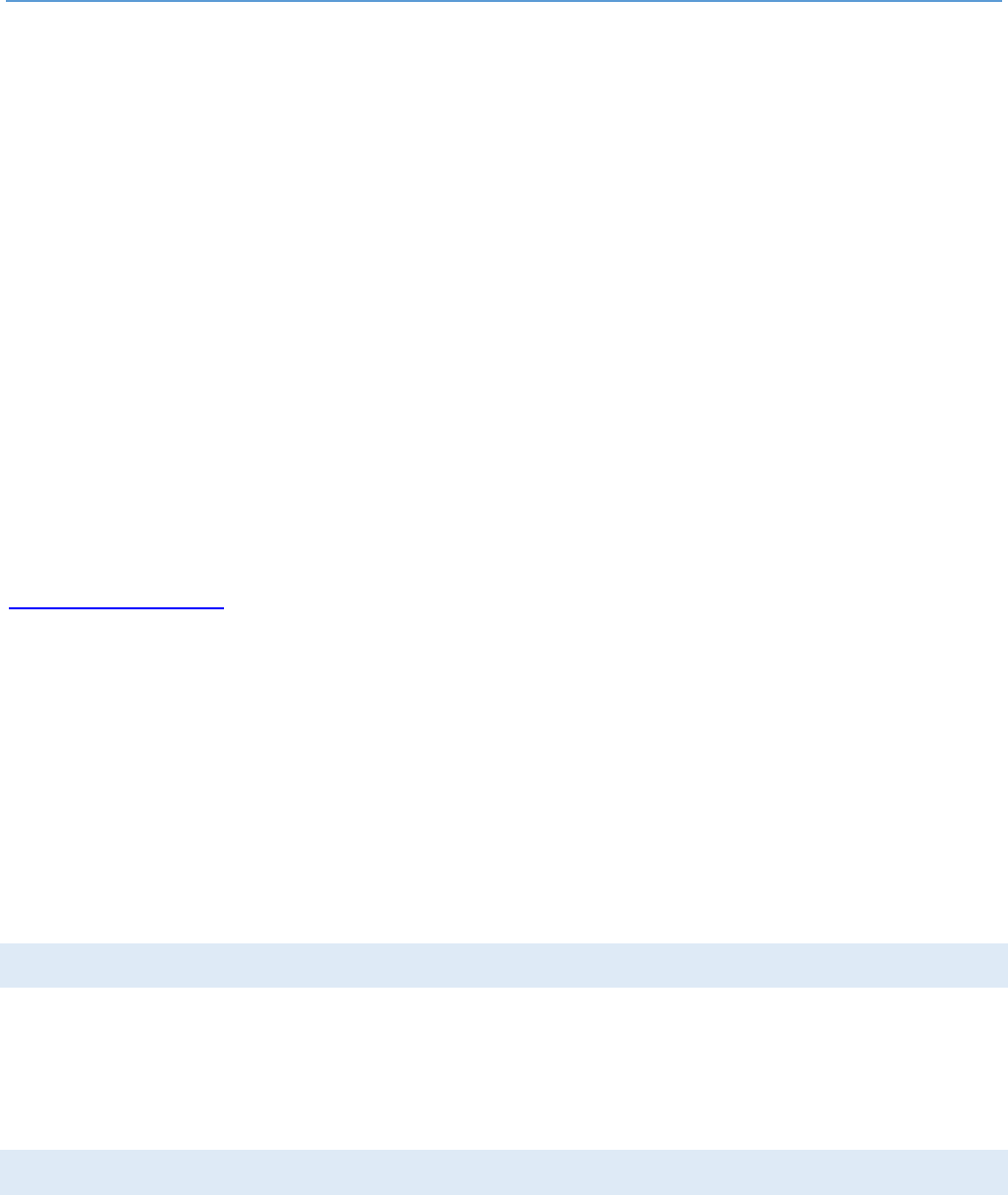
17
ACCOMMODATIONS FOR MASKING
Wearing masks may be difficult for some people with sensory, cognitive, behavioral, or other medical
issues or may conflict with a DOL employee’s sincerely held religious belief, practice, or observance. In
areas of High COVID-19 Hospital Admission Level, if a DOL employee or onsite contractor employee is
instructed or permitted to enter a DOL worksite and is unable to wear a high-quality mask properly or
cannot tolerate a high-quality mask, they must notify their supervisor and are encouraged to notify
OASAM’s Civil Rights Center or appropriate Workplace Equality Compliance Officer and discuss
whether telework or other appropriate arrangements should be considered. People who are deaf or
hard of hearing may rely on reading lips and may have difficulty communicating while wearing a high-
quality mask. Alternatives should be considered, such as providing written communication or closed
captioning, or decreasing background noise to make communication possible while wearing a high-
quality mask that blocks visibility of lips. Accommodations will be made for individuals in accordance
with existing Equal Employment Opportunity Commission (EEOC) guidance.
Individuals that feel that they may need a reasonable accommodation from masking requirements
based upon a disability or sincerely held religious belief, practice, or observance should submit requests
for accommodation as soon as the need is known. Employees can find detailed instructions on how to
submit a request for a reasonable accommodation and who to contact with questions on the
Department’s Intranet (LaborNet). As with all requests for accommodations, requests (and supporting
medical or religious documentation) will be individually assessed in order to determine an effective
accommodation.
A contractor may be required to provide an accommodation to their contractor employees who
communicate to their employer that they are not able to comply with a required safety protocol
because of a disability or medical condition or because of a sincerely held religious belief, practice, or
observance. A contractor should review and consider what, if any, accommodation it must offer. The
contractor is responsible for considering and taking appropriate action in response to such requests for
accommodations regardless of the contractor employee’s place of performance.
INCREASE SPACE AND DISTANCE
When COVID-19 Hospital Admission Levels are Medium or High, DOL will post signage in its facilities
encouraging individuals to consider increasing space and distance from others in indoor common
areas, meeting rooms, and high-risk settings.
TESTING
COVID-19 serial or point-in-time screening testing is no longer required by DOL. Any such resumed or
new serial or point-in-time screening testing plan must be approved by the DOL COVID- 19

18
Coordination Team, following consultation with the Solicitor of Labor and the Task Force, prior to
implementation.
DOL will provide a test or reimburse reasonable costs for COVID-19 testing in several circumstances
identified in the Department's testing policy posted on the Department’s Intranet (LaborNet), including
for:
1. Required diagnostic testing for asymptomatic employees following CDC guidelines on testing
after they had a known exposure to someone with COVID-19 when such employees are working
onsite at an agency workplace or interacting with members of the public in person as part of
their official responsibilities (see In Case of Exposure section below);
2. Diagnostic testing for symptomatic employees when they have had a workplace exposure;
3. Recommended testing related to approved travel on official business, consistent with CDC
guidance on travel.
The test can be both self-administered and self-read by the employee if the employee certifies as to
when they took the test and that they received a negative result.
If an employee tests positive for COVID-19, the DOL agency will follow’s OSHA recordkeeping
requirements related to case reporting.
Employees should work with their supervisor to ensure they have the test(s) needed.
When they are available, employees must use tests provided by the Department unless there is a
documented need for a different test. An employee’s preference for a different test is not sufficient.
Rather, the reason for needing a different test must be documented and the exception approved by
the employee’s supervisor in advance. Examples of where an exception would be appropriate include if
an employee is in the field and needs a test last minute to perform their job functions or if a DOL office
or worksite runs out of tests and a test is needed while the supply is being restocked. When there is a
documented need to utilize a test that is not provided by DOL, with supervisory approval, the
employee or agency could procure a test using a purchase card or the employee can make the
purchase using personal funds and then file for reimbursement.
• If purchase of a test is required, the agency’s government purchase cards should be used to pay
for testing when possible. If the employee is not able to arrange in advance for the testing to be
paid by purchase card, and they are not on official travel, they can pay for the testing
themselves and file form SF-1034 for reimbursement.
• If the employee is on official travel (including authorized local travel), they should utilize their
travel card to pay for testing and claim the testing cost in a travel voucher as a Miscellaneous
Expense. If the employee is on official travel (including authorized local travel) and does not
have a travel card, then they can pay for the testing themselves and claim the testing cost in a
travel voucher as a Miscellaneous Expense.

19
Additional details on the Department’s testing policy are available on LaborNet. This policy includes
more details on situations when the Department will provide a test or pay for or reimburse the out-of-
pocket cost of a test and when duty time can be used to take a COVID-19 test.
VENTILATION AND AIR FILTRATION
While most of the DOL workforce occupies buildings that are owned or managed by GSA, to the extent
feasible, DOL facilities are making changes to their heating, ventilation and air conditioning (HVAC)
systems, consistent with CDC guidance on ventilation in buildings, in order to optimize indoor
ventilation by increasing the proportion of outdoor fresh air brought into the facility via the HVAC
system, maximizing outside air in the building’s HVAC system, improving filtration to the highest
efficiency filter that the HVAC system can handle, or reducing/eliminating recirculation.
The HVAC system at the DOL FPB headquarters, the only building under DOL direct control, has been
modified to maximize the mix of outside air and to run continuously to increase circulation of fresh air.
The HVAC system filters are changed on the required refresh cycle as recommended by the CDC.
IN CASE OF COVID-19 ILLNESS OR KNOWN EXPOSURE
IN CASE OF KNOWN EXPOSURE
If an individual is known to have been exposed to someone with COVID-19, they must follow CDC
guidance and wear a high-quality mask or respirator as soon as possible after notification of exposure
and continue to do so for 10 full days (from the date they were last known to be exposed) while
working indoors at a DOL workplace or interacting indoors with members of the public. They should
also take extra precautions, such as avoiding crowding and increase space and distance from others
when around people who are more likely to get very sick from COVID-19, and watch for COVID-19
symptoms for 10 full days from the date they were last known to have been exposed.
Asymptomatic employees must get tested for COVID-19 following CDC guidance on testing if they are
working onsite at a DOL facility or interacting with members of the public in-person as part of their
official DOL responsibilities within 10 days of the known exposure (unless the employee tested positive
for COVID-19 with a viral test within the previous 30 days and subsequently recovered and remains
without COVID-19 symptoms, in which case they do not need to get tested after exposure). The test
can be both self-administered and self-read by the employee if the agency has the employee certify as
to when they took the test and that they received a negative result. If the employee that had been
known to be exposed to COVID-19 had tested positive for COVID-19 with a viral test within the
previous 31-90 days and subsequently recovered and remains without COVID-19 symptoms, then they
should be tested using a viral antigen test.

20
5
If the employee tests negative, they should continue to follow post-exposure precautions for 10 full
days from the date they were last known to have been exposed. If the employee tests positive, or if
they at any time develop COVID-19 symptoms, they must follow the Department’s protocols on
isolation (see In Case of Illness section below).
IN CASE OF ILLNESS
Any individual with probable or confirmed COVID-19 infection must not enter a DOL facility or interact
with members of the public in person as part of their official DOL responsibilities, consistent with CDC
guidance on isolation and the workplace safety protocols set forth by DOL, and monitor their
symptoms. This includes individuals who have an initial positive diagnostic viral test for COVID-19,
regardless of whether or not they have symptoms, and people with symptoms of COVID-19, including
people who are awaiting test results or have not been tested.
Individuals who test positive for COVID-19 and never develop symptoms are allowed to return to
working onsite at an DOL facility or interacting with members of the public as part of their official DOL
responsibilities after 5 full days following their positive COVID-19 test (day zero being the day the
individual was tested).
Individuals who test positive for COVID-19 and had mild symptoms are allowed to return to working
onsite at a DOL facility or interacting with members of the public as part of their official DOL
responsibilities after 5 full days from the onset of symptoms (day zero being the day of symptom
onset), once they are fever-free for 24 hours without the use of fever-reducing medication and their
other symptoms are improving. Loss of taste and smell may persist for weeks or months after recovery
and need not delay the end of isolation.
If an individual had moderate illness (if they experienced shortness of breath or difficulty breathing) or
severe illness (they were hospitalized) due to COVID-19, or they have a weakened immune system,
then to be consistent with Task Force guidance, the individual is advised to delay returning to working
onsite at a DOL facility or interacting with members of the public as part of their official DOL
responsibilities for a full 10 days. If an individual had severe illness or has a weakened immune system,
they should consult their healthcare provider before ending isolation. If an individual is unsure if their
symptoms are moderate or severe or if they have a weakened immune system, the individual should
be advised to talk to a healthcare provider for guidance.
Once an individual has returned to working onsite at a DOL facility or interacting with members of the
public as part of their official DOL responsibilities after having tested positive for COVID-19 and isolated
consistent with CDC guidance on isolation, the individual must continue to take precautions consistent
with CDC guidance for at least 10 full days after their first day of symptoms, or after the date of a
positive viral test for asymptomatic individuals, including wearing a high-quality mask or respirator
when around others, avoiding eating and drinking around others, avoiding environments such as dining
facilities, gyms, or other places where they may need to be unmasked around others, and avoiding
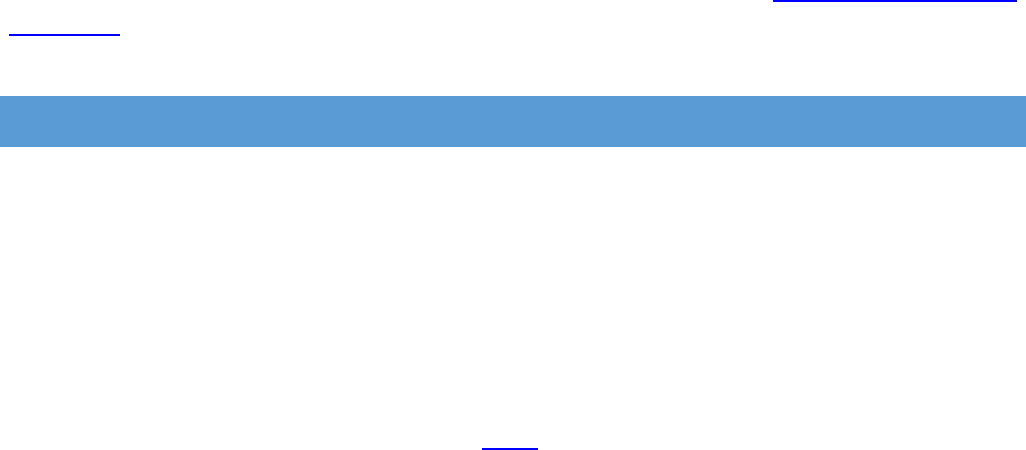
21
being around people who they know are at high risk for severe disease from COVID-19.
As it relates to mask-wearing after returning from isolation, individuals may opt to take two viral
antigen tests authorized by the FDA to detect current COVID-19 infection starting on day 6. With two
sequential negative tests 48 hours apart, the employee may remove their mask sooner than day 10. If
either of the antigen test results are positive, the individual should continue taking antigen tests at
least 48 hours apart until they have two sequential negative results. This may mean that the individual
would continue wearing a mask and testing beyond day 10.
If at any point an individual's COVID-19 symptoms recur or worsen, they must not enter a DOL facility
or interact with members of the public as part of their official DOL responsibilities, restarting at day 0,
consistent with Executive Order 13991 and CDC recommendations on isolation.
If an employee is sick, they are not expected to work and should request sick leave, use accrued annual
leave or other forms of earned paid time off (e.g., compensatory time off or credit hours), access a
voluntary leave bank, or use unpaid leave, as appropriate. When an employee who is subject to
isolation is able to telework (meaning they are telework eligible, have a telework agreement, and are
well enough to do so), they should telework.
Individuals who have a confirmed or suspected case of COVID-19 are strongly encouraged to inform
those whom they may have exposed so that those individuals can follow appropriate protocols to
protect themselves and others. For these purposes, individuals can reference: Understanding Exposure
Risks | CDC.
OFFICIAL TRAVEL
There are no Government-wide limits on official travel.
Individuals traveling on official DOL business should follow all DOL travel guidance and policies. In
addition, individuals traveling on official DOL business:
• Should be advised that CDC recommends that individuals be up to date with COVID-19 vaccines
before traveling.
• Should consider being tested for current infection with a viral test as close to the time of
departure as possible (no more than 3 days) before travel.
• Must adhere strictly to CDC guidance for travel before, during, and after official travel.
• Should check their destination’s COVID-19 Hospital Admission Level before traveling and must
wear a high-quality mask or respirator while on duty and around others indoors, if the COVID-
19 Hospital Admission Level in the county where their destination is located is High.
• Should understand all State, Tribal, local, and territorial governments travel restrictions prior to
travel, and follow those restrictions as required.

22
• Should prepare to be flexible during travel, as restrictions and policies may change during
travel.
OFFICIAL TRAVEL FOR INDIVIDUALS WITH KNOWN EXPOSURE TO COVID-19
If an asymptomatic employee had a known exposure to someone with COVID-19 within the past 10
days, DOL may approve official travel, consistent with DOL travel policy. If the individual remains
without COVID-19 symptoms before traveling, then pursuant to Executive Order 13991 and consistent
with CDC guidance, the employee must, in addition to other standard pre-travel instructions described
above:
• Wear a high-quality mask or respirator the entire time they are on-duty and around others
indoors for the full duration of their travel that falls within the 10 full days after their last
known exposure.
• Not travel on public transportation if they cannot wear a high-quality mask or respirator when
around others indoors for the full duration of their travel within the 10 full days after their last
known exposure.
• Follow other aspects of post-exposure protocols (see In Case of Exposure section above),
including following CDC guidelines on testing .
o Individuals do not have to wait for test results of their post-exposure diagnostic test to
undertake official travel, including return travel.
If the employee develops COVID-19 symptoms after official travel has been approved, they must not
undertake further official travel, including under the previously approved travel authorization, and
follow guidance on travel for individuals with COVID-19 symptoms.
Pursuant to Executive Order 13991 and consistent with CDC guidance, official travel (i.e., travel
conducted under an official travel authorization) will not be approved for individuals who have COVID-
19 symptoms and are waiting for an initial diagnostic viral test result, or for individuals who have
tested positive for COVID-19 for at least 5 full days after their first day of symptoms, or after the date
of the initial positive diagnostic viral test for asymptomatic individuals.
OFFICIAL TRAVEL FOR INDIVIDUALS WITH COVID-19 SYMPTOMS OR A POSITIVE COVID-19
TEST
Official travel can be approved if an employee who tested positive for COVID-19 has returned to
working onsite at a DOL workplace or interacting with members of the public as part of their official
DOL responsibilities (once they are fever-free for 24 hours without the use of fever-reducing
medication and their other symptoms are improving). Pursuant to Executive Order 13991 and
consistent with CDC guidance, the traveling individual must, in addition to other standard pre-travel
instructions described above:

23
• Wear a high-quality mask or respirator the entire time they are on-duty and around others
indoors for the full duration of their travel that falls within the period they are otherwise
required to wear a high-quality mask after isolation.
• Not travel on public transportation (airplanes, buses, and trains) if they will not be able to wear
a high-quality mask or respirator when around others indoors for the full duration of their
travel that falls within the period they are otherwise required to wear a high-quality mask or
respirator after ending isolation.
• Follow other aspects of post-isolation protocols (see In Case of Illness section above).
If after official travel has been approved, the individual’s COVID-19 symptoms recur or worsen, the
individual must not undertake further official travel, including under any previously approved travel
authorization, and not enter a Federal facility or interact with members of the public as part of their
official responsibilities, restarting at day zero of isolation protocols.
If an employee has probable or confirmed COVID-19 while on official travel, the employee must follow
isolation protocols (see In Case of Illness section above) and not undertake further official travel,
including return travel, for at least 5 full days after their first day of symptoms, or after the date of the
initial positive diagnostic virial test for asymptomatic individuals. Once the individual is fever-free for
24 hours without the use of fever-reducing medication and their other symptoms are improving, they
can proceed with undertaking further travel, including return travel, following the above instructions
for travel after isolation following a positive COVID-19 test.
The employee’s agency will pay for any additional travel expenses incurred as a result of an extension
or change in travel. Please note, if an emergency need arises for return home prior to completion of
isolation requirements, alternative arrangements for contactless travel home may be considered, and
DOL will cover the cost of that travel. These changes must be updated in the E2 system and may be
authorized using the emergency provisions of FTR 301.30.
When planning and approving official travel, Federal Travel Regulations and DOL policy require
agencies to “select the method most advantageous to the Government, when cost and other factors
are considered” and also provide that “travel by common carrier is presumed to be the most
advantageous method of transportation” for temporary duty travel (41 CFR §301-10.4-5). In
accordance with these authorities, and in light of safety concerns and CDC guidance at the time of
travel, supervisors and travel authorizers may consider whether COVID-19 conditions make alternative
transportation (e.g., by government vehicle, rental car, or other) the most advantageous travel
method. DOL agencies must consider other factors, such as cost, travel time, the nature and purpose of
the trip, and other impacts of travel mode decisions.
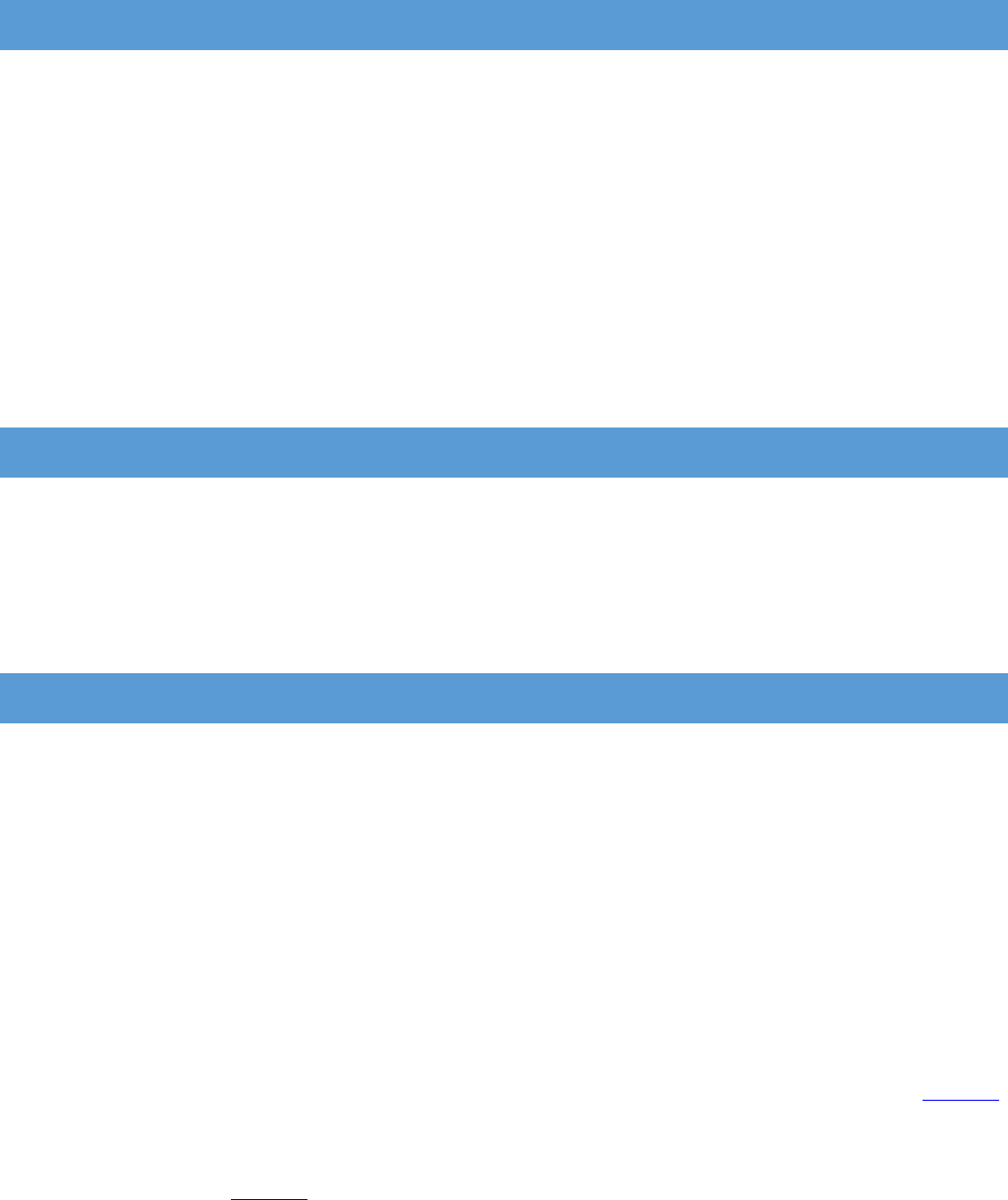
24
CONFERENCES, MEETINGS, AND EVENTS
Planners of conferences, meetings, and events hosted by DOL do not need to seek approval of the DOL
COVID-19 Coordination Team or DOL agency heads, beyond the requirements of the Department’s
existing conference process, regardless of the expected number of in-person participants or local
COVID-19 Hospital Admission Levels. However, all in-person attendees at any conferences, meetings,
or events hosted by DOL must comply with relevant COVID-19 safety protocols, including wearing high
quality masks or respirators when COVID-19 Hospital Admission Levels are High or where required by
State, Tribal, territorial, or local laws, rules, regulations, or existing collective bargaining agreements,
pursuant to Executive Order 13991 and consistent with CDC guidance. The hosting DOL agency must
monitor the COVID-19 Hospital Admission Level for the county where the event will take place leading
up to the event and communicate appropriate protocols to event participants.
OCCUPANCY LIMITS
When COVID-19 Hospital Admission Levels are Medium or High, DOL may consider establishing
occupancy limits for indoor common areas and meeting rooms where necessary. When applicable,
occupancy limits if any should be implemented at the lowest possible level (e.g., suite) in light of
physical layouts of offices, cubicles, etc.
INFORMATION MANAGEMENT
All health and medical information collected from employees, onsite contractor employees, and
visitors, including test results, and any other information obtained as a result of testing and symptom
monitoring, vaccination status, proof of vaccination, and reasonable accommodation requests, will be
treated confidentially in accordance with applicable law, including the Privacy Act and Paperwork
Reduction Act, and will be accessed only by those with a need to know in order to protect the health
and safety of personnel and manage COVID-19 procedures. The Department will consult with the
appropriate privacy, records, and IT security teams for collecting and maintaining this information as
needed.
DOL is not currently collecting vaccination status information from DOL employees, or requiring or
requesting that contractor employees or visitors be able to provide vaccination information upon
request. DOL will continue to preserve vaccination information collection systems, including its VaxTrak
system, and the information collected to date from employees, in accordance with the Federal Records
Act and other records requirements. DOL had been authorized to collect the information requested
from employees in the VaxTrak system pursuant to Executive Order 14043, Requiring Coronavirus
Disease 2019 Vaccination for Federal Employees (September 9, 2021) (subsequently revoked by
Executive Order 14099, Moving Beyond COVID–19 Vaccination Requirements for Federal Workers

25
(May 9, 2023)); Executive Order 13991, Protecting the Federal Workforce and Requiring Mask-Wearing
(January 20, 2021); Executive Order 12196, Occupational Safety and Health Program for Federal
Employees (February 26, 1980); and 5 U.S.C. chapters 11, and 79.
Medical and health information requested and provided pursuant to a request for reasonable
accommodation (discussed below) will be handled consistent with the Department’s DLMS on
Reasonable Accommodation (DLMS 6-Chapter 200). Any other medical or health information collected
from DOL employees, contractor employees, and visitors to DOL facilities will continue to be
maintained and safeguarded as confidential medical information. Federal employee documentation
will be maintained separately from employee personnel records.
CONTACT
DOL employees, DOL contractor employees, and visitors to DOL facilities who have questions about the
DOL COVID-19 Workplace Safety Plan can contact the following:
• DOL employees -- Contact COVID19Questions@dol.gov.
• DOL contractor employees -- Contact the appropriate DOL Contracting Officer or Contracting
Officer’s Representative.
• Visitors to DOL facilities -- Contact the DOL office or point of contact for your visit.
